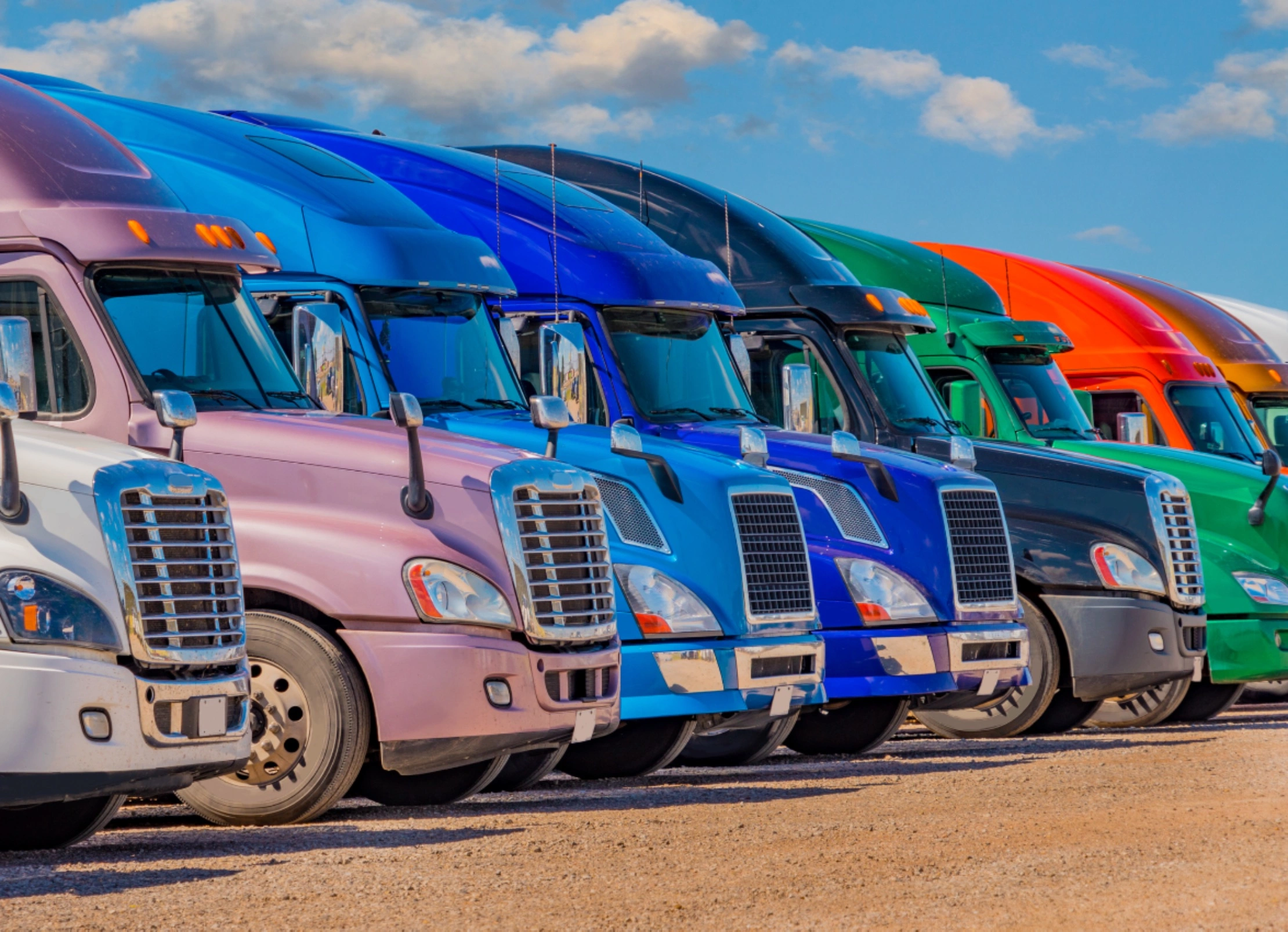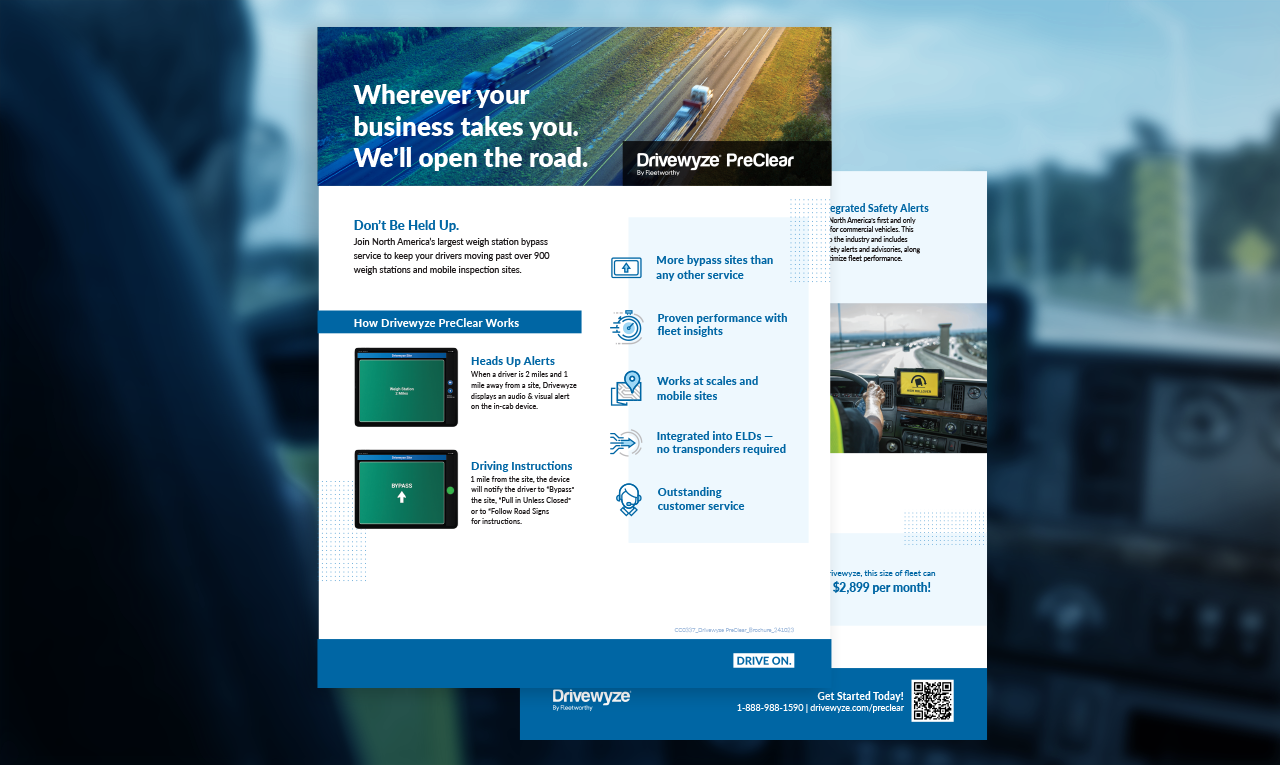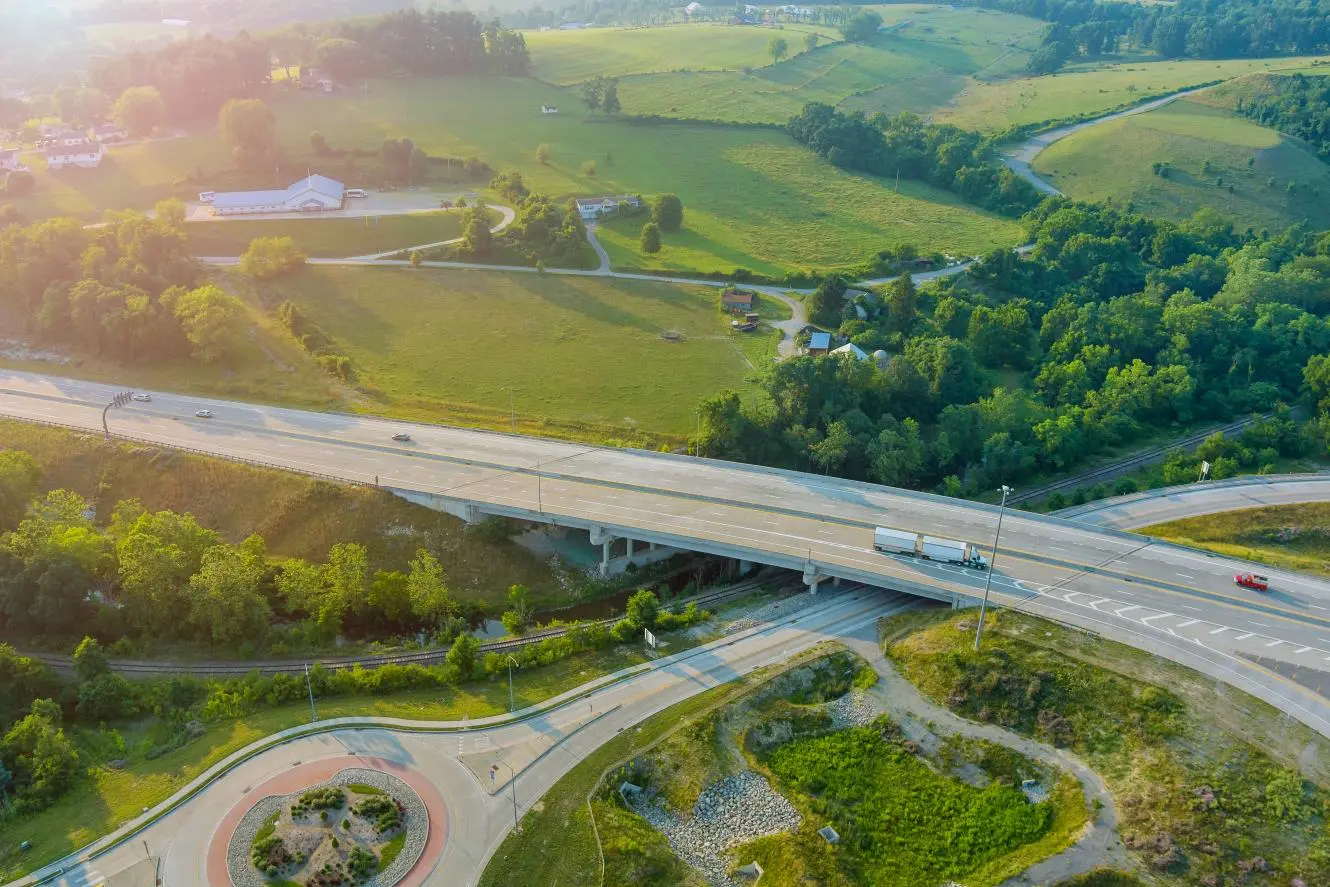Weigh station bypass programs have helped carriers save costs for years, but new bypass technologies are further improving fleet safety and efficiency.
Weigh stations are essential to the trucking industry, ensuring commercial trucks comply with weight limits and other state and federal laws. Beyond keeping drivers and highways safer, this also reduces damage to public infrastructure, like roadways and bridges, that could result from overweight vehicles.
Despite their importance to fleet and public safety, weigh stations come at a significant cost to carriers. Weigh station visits redirect drivers from their routes, causing delays, higher fuel consumption, and longer working hours. This leads to increased overhead and the potential for customer dissatisfaction if deliveries are consistently late. The average visit takes three to five minutes and can add up to US$8.68 in lost productive time.,
Running behind schedule and pulling off the highway, especially on congested roads, also contribute to driver stress and presents additional safety risks. These factors can fuel driver turnover and further inflate operating costs for carriers.
Many carriers are turning to weigh station bypass programs to address these concerns, which allow drivers to legally skip weigh stations—as long as their vehicles meet certain criteria. This approach can minimize fuel use, time, and labor costs and keep customers satisfied with on-time deliveries. Carriers can also reduce safety risks associated with merging and pulling into weigh stations on busy roads, while drivers can enjoy less stressful, more efficient workdays.
What Happens at Weigh Stations and How Do Bypass Programs Work?
Fleet managers and safety directors may be unfamiliar with what happens during a weigh station visit, especially if they don’t have experience driving commercial trucks. Knowing how weigh stations work—and understanding them from a driver’s point of view—is valuable for these fleet professionals, helping inform decisions related to bypass service investments, cost reduction, and employee retention.
| To learn more about what happens behind the scenes at a weigh station, download the ebook: Secrets Behind the Weigh Station and How to Avoid Detention |
Weigh Station Technologies
There are over 1,000 weigh stations across the highway system in the United States. Commercial trucks weighing more than 10,000 lbs are typically required to pull into any stations on their route unless they are eligible for a bypass (more on this later). As a truck approaches a weigh station, it encounters several different screening technologies that support the inspection process.
Automated readers are high-definition cameras that capture the approaching truck and record its US Department of Transportation (USDOT) and license plate numbers, Commercial Vehicle Safety Alliance (CVSA) sticker, and any hazmat placards. This allows law enforcement officers at the upcoming weigh station to quickly gather details about the vehicle and its carrier.
While still at speed, the truck also passes over a weigh-in-motion (WIM) scale that registers its weight about a half mile away and flags it if it is overweight. Another type of in-road sensor, vehicle waveform identification (VWI), detects the truck’s composition and load. This data is used to create a unique signature, which helps weigh station personnel organize and track vehicles as they move through the facility.
After the truck pulls into a weigh station, it may encounter thermal inspection technology and overview cameras. Thermal cameras identify unsafe equipment, such as damaged tires, failed axles, or worn-out brakes, while overview cameras match on-site trucks with the information gathered from automated readers.
Inspections and Citations
Commercial trucks that are flagged as overweight must be inspected, but there are also cases where weight-compliant trucks may be called in for further inspection. For example, unusual driver behavior or visible safety concerns may prompt law enforcement to conduct an inspection anyway. Vehicles can also be flagged based on the carrier’s safety records, including its inspection selection system (ISS) score. Additionally, states have random pull-in rates to ensure that all carriers maintain a sufficient safety posture, regardless of their safety history.
| CSA Vs. ISS Scores: What’s the Difference? Compliance, Safety, and Accountability (CSA) and ISS scores were developed by the Federal Motor Carrier Safety Administration (FMCSA) but used for different purposes. A CSA score measures a carrier’s safety performance and compliance with safety regulations. Scores are calculated based on the carrier’s roadside inspection, traffic enforcement, DOT audit, and crash report information over the past two years. An ISS score combines various CSA measures into a single score that allows roadside officers to quickly determine whether a truck should be given a bypass command or called in for inspection. CSA and ISS scores are assigned a value between 0 and 100 with lower scores indicating better performance. When it comes to weigh station bypassing, carriers with an ISS score between 1 and 49 are generally granted a pass unless the driver is called in for probable cause or a random inspection. The ISS recommends that officers must inspect carriers with scores between 75 and 100, while inspections are suggested optional for those scoring between 50 and 74. It is important to note that these are merely recommendations to enforcement agencies. They may choose to select fleets in the “Pass” category for inspection or bypass fleets in the “Inspect” category. In addition, they may choose to select fleets in any of the categories at various rates. For instance, one state agency may select only 50% of the vehicles operated by a fleet in the “Inspect” category while another state may select 100% of them, depending on available resources. While CSA scores measure all aspects of a carrier’s safety performance and compliance, an ISS score generally only covers issues that are best addressed during roadside inspections. This means that patterns of violations that cannot be addressed during vehicle inspections (like speeding) are not used to prioritize fleets and don’t necessarily result in a poor ISS score. |
While some trucks undergo basic visual safety inspections for obvious defects like those relating to tires and lighting, others may be subject to more comprehensive inspections of the vehicle and the driver’s compliance with safety regulations. During such a DOT inspection, an officer will take a closer look at driver’s electronic logging device records, hours of service (HOS) compliance, commercial driver’s license (CDL) compliance, International Fuel Tax Agreement (IFTA) records, and other relevant information.
If the vehicle is found to be in violation of state law, officers may issue citations to the responsible party (e.g, the fleet or the driver). For example, a carrier would be cited for maintenance problems, while a driver would be cited for not wearing a seatbelt. While not all violations result in a citation, violations (i.e. noncompliance) is always recorded on inspection reports. All violations, whether resulting in the issuance of citation or not, can negatively affect a carrier’s safety score. This can result in negative consequences such as which typically means higher insurance premiums and more frequent inspections and DOT audits.
How to Bypass Weigh Stations Legally
Weigh station bypass programs, which are delivered by state agencies and third-party companies like Drivewyze, allow drivers to legally pass by weigh stations without facing penalties. Trucks are eligible to bypass if they aren’t overweight and if the carrier has a sufficient ISS score. It’s important to remember that even if eligible, trucks may sometimes be called in at random or if officers observe obvious safety issues, such as an underinflated tire.
Bypass programs aim to reward carriers for adopting safe operating practices: The better the carrier’s safety posture, the fewer roadside inspections their drivers need to have. This improves fleet efficiency and reduces the fuel and maintenance costs required to make weigh station visits. With the bypass service Drivewyze PreClear, carriers can save 0.4 gallons of fuel per bypass. Such programs can also support a fleet’s idle reduction strategy, which can increase carrier efficiency, drive profitability and revenue, and address sustainability mandates.
What’s more, fewer roadside inspections mean happier drivers and less weigh station congestion when they are required to pull in. Weigh station personnel also benefit since they only need to focus on carriers and vehicles that require their attention.
| How Have Real-World Fleets Benefitted From Bypass Programs? | ||
| After implementing Drivewyze PreClear, a software-based bypass program, here’s how three US-based carriers benefitted. | ||
| Argo Transporters | USA Truck | Arka Express |
| 7.48X return on investment. $36,000 cost savings in the first two weeks of use. | Saved over $1.36 million and 12,576 hours of drive time in six months. | Reduced fleet time at weigh stations by 329 hours and saved $34,269 in related operating costs in one month. |
Bypass services are either transponder- or software-based. Transponder bypass programs require trucks to drive under a transponder-reader pole in the right lane, about a mile before the weigh station. The reader relays vehicle information from the truck’s transponder, a device installed on the windshield, to law enforcement officers. The transponder then notifies the driver if a bypass is granted.
Mobile- or software-based bypass programs have a more modern approach using network devices like smartphones, tablets, or electronic logging devices (ELDs) instead of a transponder. Since the system is based on software and not physical infrastructure, drivers receive bypass notifications on the device regardless of what lane they’re in. Also, software-based bypass systems are available in hundreds more locations than transponder based systems, since they are not dependent on the presence of roadside transponder readers.
| How Drivewyze PreClear Works Drivewyze PreClear is a software-based bypass service that has the widest coverage in North America. Here’s a breakdown of how it works: 1. When a truck is within two miles of the weigh station, the driver receives a visual and audio alert on their smartphone or tablet that there’s a weigh station ahead. 2. Drivewyze PreClear reads the vehicle’s USDOT number without the driver needing to slow down or change lanes. 3. The USDOT number is used to retrieve the carrier’s ISS score. The bypass software also uses imaging and sensor technology to give law enforcement detailed information about the vehicle and its carrier, including vehicle weight. 4. Within a mile of reaching the weigh station, the driver is again notified and instructed to either bypass or pull in. |
Dispelling Common Myths About Bypass Programs
Bypass services have been used in the trucking industry for decades, but programs are evolving with software-based systems like Drivewyze PreClear. Even with widespread use, there are still misconceptions about how these programs work. Here, we debunk some of the most common myths surrounding the technology.
Myth #1: Bypass Programs Lead to More Inspections
Bypass programs are meant to reward carriers for good safety performance. If the carrier has a low ISS score, meaning that its safety performance is good, drivers will have fewer inspections. However, even carriers with excellent ISS scores may occasionally be inspected to meet random pull-in rates in each state.
Myth #2: Drivers Can Be Tracked Through Bypass Programs
Bypass programs only screen for data that will allow law enforcement to identify safety violations. This means that driver data, including hours of service, medical records, and CDL information, stays private and never accessed or shared by officers through a bypass service. Additionally, vehicle data is only collected within range of the weigh station and is not shared with officers or organizations outside of it.
Myth #3: Bypass Technology Is Used as a Speed Enforcement Tool
Bypass programs do not track vehicle speeds—for example, between two weigh stations. They are used exclusively to evaluate safety performance and are meant to reward high-performing carriers, not to identify speed violations or issue speeding citations.
Myth #4: Bypass Programs Use CSA Scores to Screen Vehicles
Bypass programs screen for ISS scores. An ISS score is determined partly by whether the carrier has had any serious violations in the last 12 months. It also factors in CSA data, including Behavior Analysis and Safety Improvement Categories (BASIC) scores. BASIC scores cover areas like hours of service compliance and vehicle maintenance. If the carrier is deficient in multiple BASIC categories, it will have a higher ISS score and is more likely to be called in for roadside inspections.
Choosing a Bypass Service: Things to Look For
| Helpful Links: Choosing a Bypass Service Top 4 Things to Look for When Choosing a Bypass Service Transponder Vs Mobile Bypass Technology—Which One Is Right for You? Ebook: The Complete Guide to Bypass Programs The Drivewyze Difference |
While a bypass service can offer significant cost savings and fewer headaches for carriers, not all programs are created equal. Here are four features to consider when choosing a solution that best suits your fleet.
1. Wide coverage
Opting for a service with the widest possible coverage gives your drivers more bypass opportunities. This is especially valuable for carriers with multi-state or North American-wide routes. When choosing a bypass service, make sure that coverage is supported at both fixed and mobile weigh stations.
| How Extensive Is Drivewyze PreClear Coverage? Drivewyze PreClear has the largest bypass coverage of any service, with support at over 900 inspection sites in 48 US states and Canadian provinces. |
2. Mobile- or software-based technology
Software-based bypass technologies are more cost-effective than transponder-based services, which can be expensive to maintain. For example, carriers using them need to invest in transponder inventory and shipping, monthly service fees on top of a weigh station bypass subscription, and fees for lost, stolen, or damaged transponders. Additionally, mobile- or software-based services are more flexible and straightforward to implement, offering:
- Ease of use. Drivers don’t need to worry about merging into lanes with a transponder reader to be granted a bypass.
- Integrations. Bypass services that use open platforms allow carriers to integrate different types of software on devices that are already in the truck. Fleets can avoid expensive hardware installation and maintenance.
- Safety add-ons. Drivewyze PreClear users can easily integrate Drivewyze Safety+, which gives drivers in-cab alerts and coaching for road safety hazards. This supports safe driving behaviors, further improving ISS scores and bypass eligibility.
Before choosing a bypass service, check whether the software will run on your fleet’s existing ELDs or if it will require additional devices, such as smartphones. Make sure to ask the provider if their coverage area is supported on the software alone, as some solutions may require both the software and a transponder.
3. Comprehensive customer support
Before investing in a bypass service, carriers should ensure that the program provider offers 24/7 customer service, efficient response times, and extensive training and onboarding resources. It’s also smart to ensure that the provider comes with support for various roadside scenarios—for instance if a driver is pulled over even if they were granted a bypass.
4. Bypass data and insights
Some bypass programs offer a wealth of information that can inform a carrier’s safety initiatives and indicate a return on investment (ROI). For example, Drivewyze PreClear reports on cost and time savings estimates, pull-in volumes and duration by location, reasons why drivers are asked to pull in, and commonly evaluated safety criteria.
| PrePass Vs. Drivewyze PreClear If you’re in the market for a bypass service, you might be wondering whether a transponder- or software-based technology is right for your fleet. Here’s a quick comparison of PrePass, a common transponder-based solution, and Drivewyze PreClear. | ||
| Drivewyze PreClear | PrePass | |
| Route Coverage | 900+ sites in 44 US states and 4 Canadian provinces | ~550 sites in 42 US states and a Canadian province |
| Hardware | No additional hardware beyond an ELD | Requires transponder and mobile app for full coverage |
| Ease of Use | Drivers receive bypass notifications in any lane | Drivers must be in range of a transponder reader |
| Integrations | Largest partner network with 20 different integration options | Limited device integration options |
| Safety Add-Ons | Customizable safety alerts and in-cab coaching | Safety alerts available |
| Data and Insights | Detailed insights for all inspection sites | Reporting only supported by PrePass sites |
| Truck ID Accuracy | Over 99% | Depends on proximity to transponder reader |
| Cost | $$ | $$$ |
How to Get the Most Out of a Bypass Service
Even if your ISS score has room for improvement, your drivers can still be granted bypasses—it just means they’ll be granted fewer. However, there are several ways to improve your ISS scores, achieve more bypass opportunities, and maximize your investment.
Make Smart Investments in Your Safety Program
If your goal is to achieve better safety scores, consider how driver training, written safety policies, safety culture, and other aspects of your fleet’s safety program can be improved. Many leading carriers are able to get the most out of their bypass program by investing in advanced safety technologies like in-cab alerting systems, such as Drivewyze Safety+, and driver behavior telematics.
These solutions can not only keep drivers more prepared for on-the-road risks but also help carriers understand which aspects of their safety program require changes. Over time, this can reduce unsafe driving incidents and improve CSA and ISS scores. If you want to test out a safety alerting tool or don’t yet have the budget for one, consider signing up for Drivewyze Free. This service gives drivers access to essential in-cab safety alerts and advisories in advance of potential risks at no cost.
Leverage Bypass Data
A good bypass service will provide access to information like bypass volumes by location and common reasons why drivers may be required to pull in for inspection. It’s important to take advantage of these insights and use them to improve your safety strategy and performance. This will, in turn, lower your ISS score and enable more bypasses. For example, if reports show that most drivers are being pulled in due to underinflated tires, make this aspect of vehicle maintenance a key priority.
Develop a Rapport With Law Enforcement
Establishing relationships with law enforcement officers along your routes is an effective way to better understand inspection criteria relevant to your fleet. You can also invite officers for on-site inspections or Q&A sessions with drivers and other fleet personnel. If you’re confident you can pass without issues, consider getting your drivers to volunteer for inspections when possible to build up a violation-free record.
Educate Drivers on Bypass Programs
Some drivers may have reservations about using a bypass service if the concept is new to them. It’s important to emphasize the benefits of bypass programs to encourage buy-in and dispel common myths so drivers feel safe participating. Carriers can also benefit from making driver education and training an iterative process. Evaluate your safety performance and bypass data regularly, and adapt accordingly to meet your goals. Investing in proactive safety alerting tools like Drivewyze Safety+, an easy add-on to Drivewyze PreClear, is also an effective way to build a stronger safety record and improve your program’s ROI as drivers are granted more bypasses.
| 5 Ways to Optimize Your Weigh Station Bypass Program 1. Invest in safety technologies that complement the program. 2. Leverage data from your bypass program and focus on areas needing improvement. 3. Develop a rapport with law enforcement officers in your area. 4. Educate drivers on bypass programs and their benefits. 5. Have an agile approach to continuous driver training and safety. |
Keep Your Fleet Moving With a Bypass Program
Pulling in for weigh station inspections is an inevitable part of operating a commercial fleet, ensuring that roadways are safer while minimizing infrastructure damage. The reality is that weigh station visits have significant costs for carriers, resulting in higher fuel consumption, lost productive time, operating costs, and turnover rates due to driver stress.
A bypass service is a smart investment for fleets looking to reduce these costs and generate ROI over time. It’s also crucial for improving your safety standing with state and local law enforcement, as well as FMCSA. If you’re in the market for a bypass service, consider a software-based system to keep your drivers happier and access insights that can support the rest of your safety program.
Interested in learning more about Drivewyze weigh station bypass program? Sign up for a demo here.

Ready to Get Started?
Learn how Drivewyze can improve commercial transportation safety and efficiency





